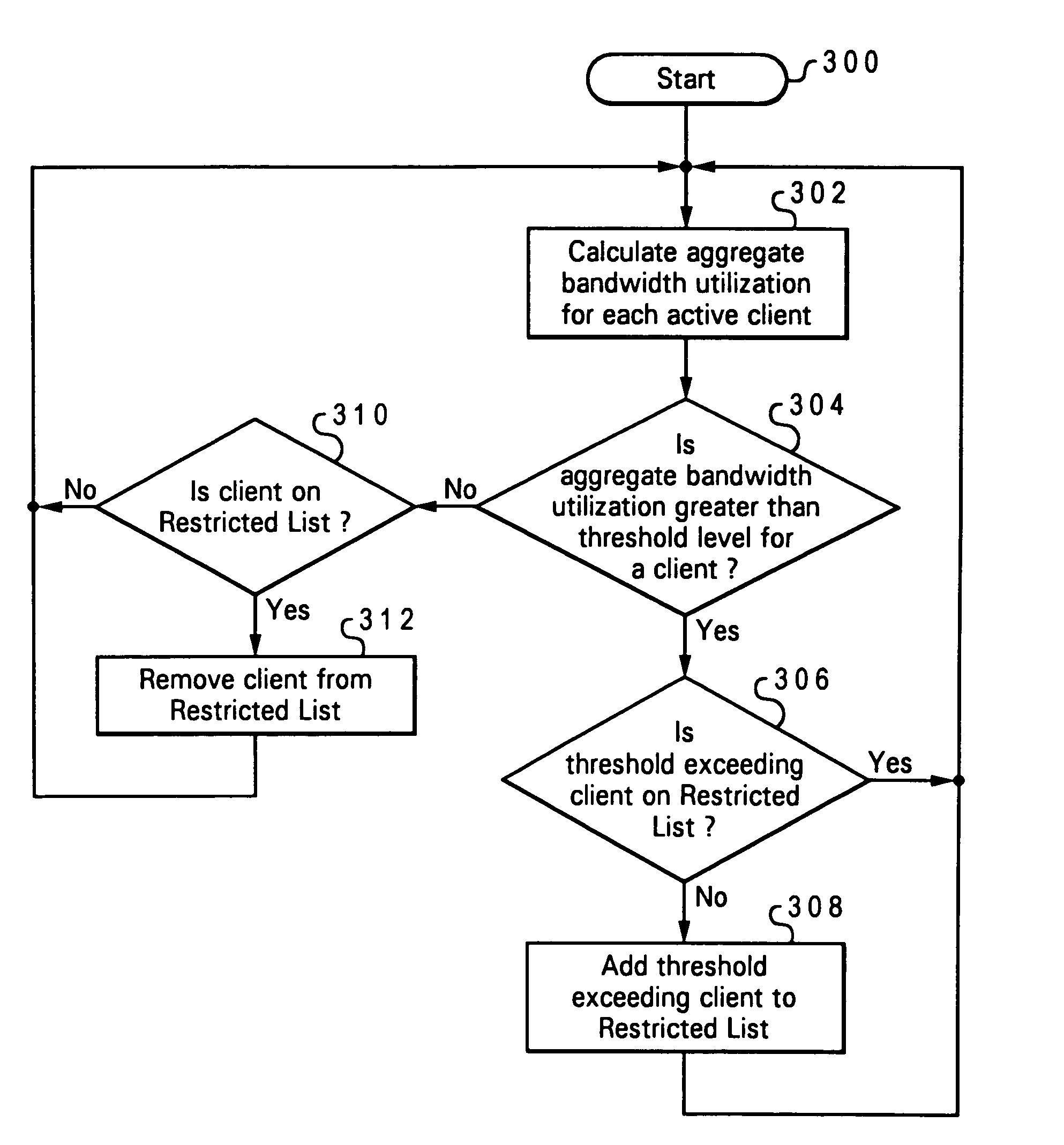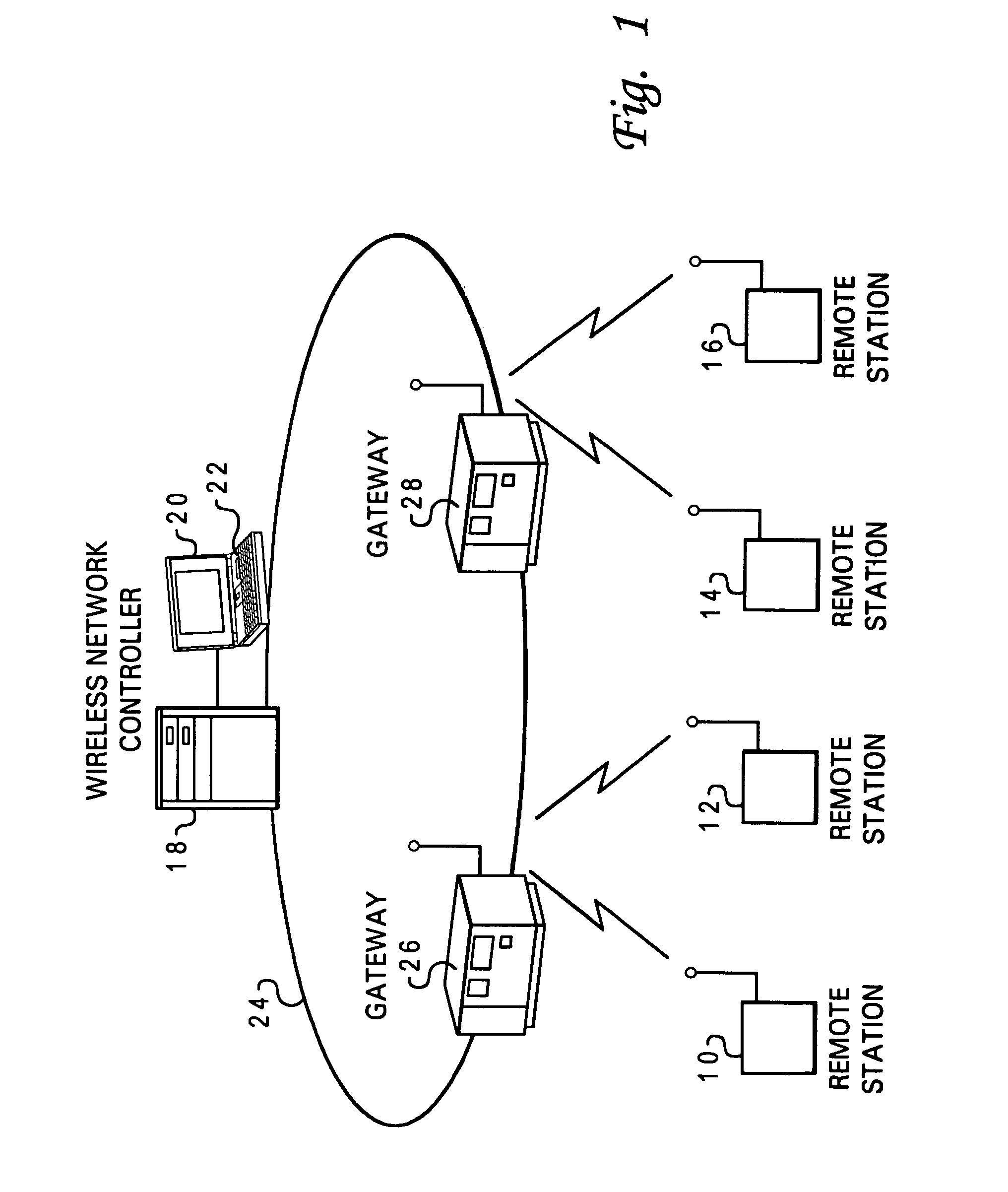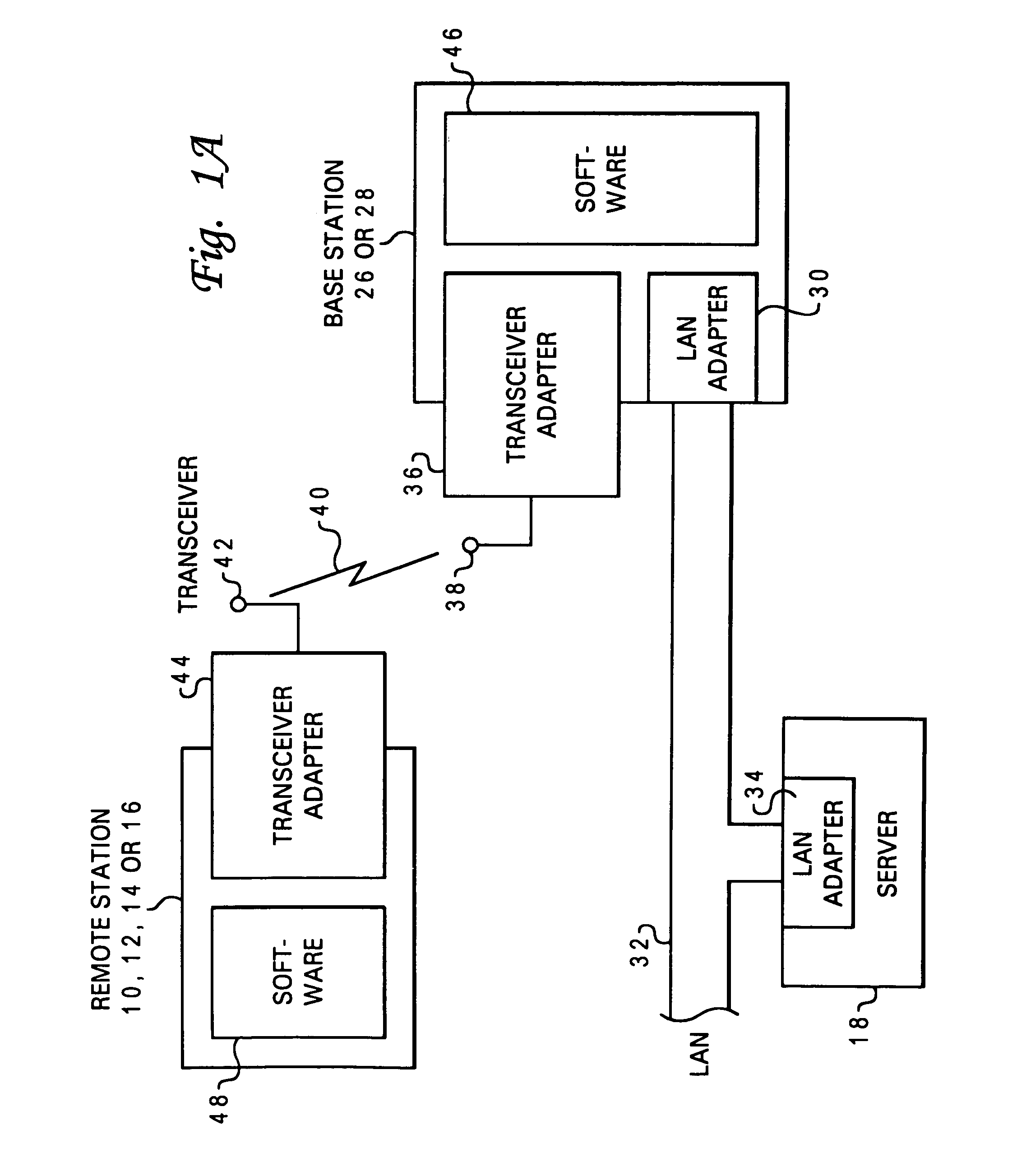Bandwidth management in a wireless network
a wireless network and bandwidth management technology, applied in the field of data communication, can solve the problems of inability to guarantee the bandwidth throughout the transmission, further exasperation,
- Summary
- Abstract
- Description
- Claims
- Application Information
AI Technical Summary
Benefits of technology
Problems solved by technology
Method used
Image
Examples
Embodiment Construction
[0021]With reference now to the figures, and in particular with reference to FIG. 1, there is shown a local area radio system allowing communication between a plurality of remote stations 10, 12, 14, and 16 and applications and data residing in a computing system, and implemented in accordance with a preferred embodiment of the present invention. The computing system typically includes a Wireless Network Manager (WNM) or Wireless Network Controller (WNC) 18, (the WNM or WNC is typically a card that is inserted into a computer system) with attached monitor 20 and keyboard 22, of a local area network (LAN), generally indicated by reference numeral 24, having a plurality of attached workstations or personal computers (not shown for simplicity). Also attached to the LAN are one or more access points 26 and 28 with which the remote stations 10, 12, 14, and 16 communicate. These access points are augmented according to the invention to provide certain radio system management functions whi...
PUM
 Login to View More
Login to View More Abstract
Description
Claims
Application Information
 Login to View More
Login to View More - R&D
- Intellectual Property
- Life Sciences
- Materials
- Tech Scout
- Unparalleled Data Quality
- Higher Quality Content
- 60% Fewer Hallucinations
Browse by: Latest US Patents, China's latest patents, Technical Efficacy Thesaurus, Application Domain, Technology Topic, Popular Technical Reports.
© 2025 PatSnap. All rights reserved.Legal|Privacy policy|Modern Slavery Act Transparency Statement|Sitemap|About US| Contact US: help@patsnap.com



